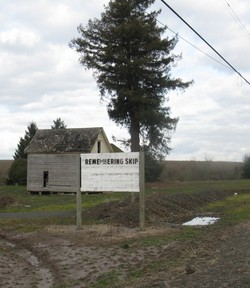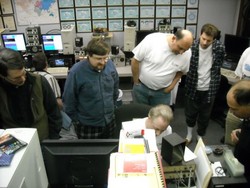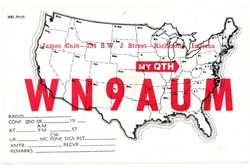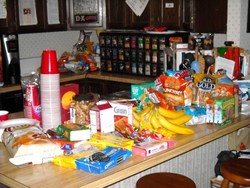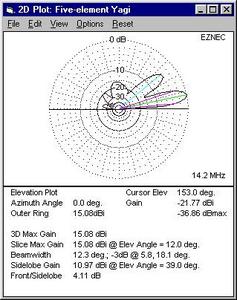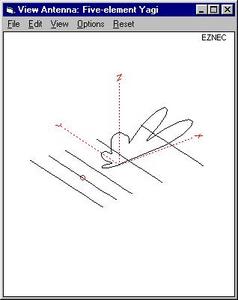 March 2, 2011 Editor: Ward Silver, NØAX | ||||||||
IN THIS ISSUE
NEW HF OPERATORS - THINGS TO DO After cracking your CW knuckles in the ARRL DX CW contest, this weekend's ARRL DX Phone contest will test tongue-tied transmissions. It's geomagnetically stormy upstairs as this issue goes to press, but persevere - if you hang in there and the competition doesn't...you may prevail! BULLETINS No bulletins in this issue - although you should all take time out to write your Congressional representative about House Bill HR 607. BUSTED QSOS I was informed that "Leavin' On A Jet Plane" was originally by John Denver and Dr Beldar has been gently disabused of his misattribution to Peter, Paul, and Mary. CONTEST SUMMARY Complete information for all contests follows the Conversation section Mar 5-6
Mar 12-13
The Contest Update would like to congratulate all winners of the 2011 Dayton Hamvention awards. The Amateur of the Year is Shirley Roberts, N8LX of Dayton, OH for her record of public service. The Albemarle Amateur Radio Club, WA4TFZ, of Charlottesville, Virginia was named Club of The Year for exemplary contributions in public service, emergency communications and youth recruiting. The Technical Excellence Award went to a familiar name, Roy Lewellan, W7EL and more about Roy is written in the Conversation section of this issue.
WRTC 2014, Inc., host of the 2014 World Radiosport Team Championship competition, is pleased to announce that it has received a significant financial contribution from the Northern California DX Foundation (NCDXF). "We appreciate this early show of support from NCDXF," said Doug Grant, K1DG, Chairman of WRTC-2014. "We intend to follow the example set in previous WRTC competitions to provide a high level of competition on an unbiased playing field. In addition, we intend to use the event to promote amateur radio competition to a wider audience inside and outside the hobby." To provide assistance with WRTC-2014 fund raising efforts, the Northern California DX Foundation has established a special account to receive tax-deductible donations of $100 or more from individuals. Donations to this account should be made by checks payable to NCDXF, but with the notation "WRTC-2014," and mailed to the WRTC-2014 Fund, NCDXF, Rusty Epps W6OAT, 651 Handley Trail, Emerald Hills, CA 94062 USA. For information on sponsorship, or for general information about WRTC-2014, contact WRTC Chairman, Doug Grant, K1DG, via e-mail at k1dg@wrtc2014.org. This is a good opportunity to help the next WRTC get off to a fast start! The North Coast Contesters are proud to announce that Scott Redd, KØDQ will be the featured speaker during the 19th Annual Dayton Contest Dinner on Saturday, May 21, 2011 at the Crowne Plaza in downtown Dayton, Ohio. KØDQ was the operator behind the impressive WW1WW all-band effort last weekend in the ARRL International DX CW contest and is an engaging speaker. Tony WA8RJF invites all Weak Signal VHF, UHF and Microwave enthusiasts to the 16th VHF Weak Signal Group banquet (no, you won't have to whisper) to be held on Friday evening, May 20th, 2011 at the Doubletree Dayton Downtown Hotel, 11 South Ludlow St. Dinner begins at 7:15 PM, followed by Dana Whitlow, K8YUM presenting "Noise at Arecibo - It's Not Just the Coqui". Reservations are required at a cost per person of $35.00 which includes valet parking. Send a check and an SASE to: Tony Emanuele WA8RJF, 7156 Kory Court, Concord Township, Ohio 44077-2221, including the names and calls of all attendees as well as an email address.
Geoff WØCG/PJ2DX reports that PJ2T's log for the recent ARRL DX CW contest is the first to have broken the 10 million-point barrier in that contest with a claimed score of 10.8 megapoints from 10,345 QSOs. Will the record still stand after the log checking process? Tune in later this year for the final results! Don W7WLL, the "K" sorter for the W7 QSL Bureau, cautions us that there are maximum weight, maximum size, and other surcharges for certain conditions when calculating postage. If your package or envelope is anything out of the ordinary, read the fine print when using the USPS postage calculator. The 160 meter band was full of signals from end to end last weekend during the CQ 160 Meter WW SSB contest. Numerous correspondence noted that this was the first time for such complete occupancy of Top Band - all the way to 1.999 MHz! Yet not all hams have full access to the band. Henk PA5KT's online table of 160 meter allocations helps you find where the DX may transmit - the rest is up to you! The May 1953 QST article by W3FQB, "The Man Who Broke the Bank" certainly seems prescient in its anticipation of station automation. ARRL members can find the article online for some amusing reading. (Thanks, Tim K3LR) Web Site of the Week - Not a Top Band array, Europe's continent-wide Low Frequency Radio Array (LOFAR) radio telescope combines some simple antennas with distributed computer processing to create a huge telescope tuning 115 to 190 MHz. The first radio "pictures" are just being delivered - is anybody out there during the VHF+ contests? WORD TO THE WISE Jim K1TN contributes another pair of QST articles predicting technology the modern radiosport participant will find familiar: "The Mind of the Contester," (July 1990) and "Packet With a Purpose," (August 1990). The Potomac Valley Radio Club (PVRC) has two excellent contesting webinars lined up for March. On Wednesday, March 9 at 9 PM EST, World Radio Online propagation editor, Carl Luetzelschwab K9LA will discuss several topics pertaining to HF propagation. And on Sunday, March 13 at 2 PM EDT (note the time change to DST) CQ WPX Contest Director, Randy Thompson K5ZD will hand out some tips for fun and success in WPX. Registration links for both presentations are posted on the PVRC website. In addition, the K3LR webinar on Contest University is also online in the Recorded Webinars. (Thanks, Ken K4ZW) Rick NQ4I has posted a video about NQ4I CQWW SSB, shot, edited and published by Lu, W4LT.
Celebrate the 100th birthday of "Uncle" Leo Meyerson, WØGFQ, one of ham radio's legends, as he is interviewed by NBC's Willard Scott on "The Today Show" on Wednesday morning, March 9th. A mentor to many, Leo was the man behind the World Radio Lab "Globe" and "Galaxy" equipment used by so many in the 1950's, 1960's and beyond. (Thanks, Gene W4IMT) You can do what off the Moon? The AMSAT bulletin ANS-051 notes that a video of Earth-Moon-Earth (EME) station HB9MOON demonstrating moon-bounce as part of the Google Science fair experiment, "How do you measure the distance between Earth and the Moon?" How did the world's first transistor work? Here's an interesting video on the subject. (Thanks, Brian VE5RDV) Is the word "ruins" a verb or a noun in the video title, "Marconi ruins surface in Wellfleet"? Watch and find out! (Thanks, Guy N7UN) I like novel visualizations of data sets (I need a hobby, apparently) such as this animation of Twitter network retweets at the time of Egyptian president Mubarak's resignation. What would a big contest look like if presented this way? Rich NU6T found visualizing 1 watt per square meter to be difficult, but recommends this photo as a good training aid. The IARU HF Championship writeup by Carl K9LA is now online in extended form including extra material from the W1AW/8 hosts and operators. Hustling to get the Sweepstakes results out, the hard-working results authors Kelly VE4XT and Steve N2IC have provided preliminary results for both modes of the November 2010 SS. The full QST and extended online article packages will be published in the weeks ahead. (Thanks, ARRL Contest Branch Manager, Sean KX9X) Preliminary results for the February CW Sprint are now posted online. Who is the operator that achieved the coveted "Hat Trick"? (Thanks, CW Sprint Manager, Tree N6TR)
A summary of the RAC Canada Winter Contest logs received and entry category for each has been posted. results from previous years are also online for your enjoyment. Please contact contest chairman, Sam VE5SF if you have questions, concerns, or feel there have been errors in the category assigned to your contest entry. There are more than 500 kbytes of soapbox commentary for the ARRL DX CW contest as captured from 3830 claimed-score postings by Dink, N7WA. OPERATING TIP Rick "The Locust" K6VVA was operating from KP2CW in the ARRL CW DX contest - by remote control, no less - and noted not just the usual packet-pileups, but "everyone was exactly ZERO BEAT (or within a few Hz) apparently as a result of point-and-click with no single station loud enough to rise above the pack." Needless to say, this makes high-rate operation well-nigh impossible. The technology of cycle-resolution frequency control and accuracy has unintended consequences! The solution? When selecting spots point-and-shoot style, take your hand off the mouse and wiggle the big knob in the middle of your radio before launching your call sign. Wouldn't it be great to go back after a contest and generate a report of your signal strength compared to other stations in your area? For CW contests, that capability exists today by using the Reverse Beacon Net's Analysis tool. Pete N4ZR explains, "It is graphical and only handles one skimmer and one 24-hour day at a time, but up to 10 stations can be compared at once. It's pretty informative, particularly because the graphical representation and your eye can filter out the odd variations and easily see trends, like who opens the band first, and who is stronger in which part of the opening." Game on!
Larry N7DF has found a website with some interesting information to help us figure out what goes on in Top Band propagation if VLF conditions relate to MF conditions. Regarding the use of Morse code for communication with folks with compromised speech or textual abilities, Frank KR1ZAN notes that Thomas King has a book on the subject titled, "Modern Morse Code in Rehabilitation and Education: New Applications in Assistive Technology". If you know a puzzle fan, then maybe this Design News "Gadget Freak" case will spark your creative juices in creating a custom conundrum just for them! Technical Web Site of the Week - Multi-multi station owners, rejoice! From Slashdot comes the news that "Scientists at Stanford University have built a radio that can transmit and receive at the same time on the same frequency." I wonder if those scientists ever operate at W6YX? Don't get too excited - it's only for WiFi - but can 20 meters be far behind? An EZ Choice In case you hadn't heard the news, the Dayton Hamvention's Technical Excellence Award for 2011 has been given to Roy Lewellan, W7EL, author of the EZNEC antenna modeling program. It's entirely appropriate that Roy was recognized for making professional-quality antenna modeling software available and affordable to hams!
While there are other fine antenna modeling programs available, EZNEC has become the standard tool used by amateurs world-wide for antenna design and experimentation. Its modest cost, accurate results, and ease of use have completely changed the game of amateur antenna design. In the scope of its effects on and benefits delivered to amateurs, it has been Promethean. It is to Amateur Radio what SPICE is to analog electronics and the forward pass to football. After Roy's mid-1990's introduction of ELNEC (the MS-DOS precursor to EZNEC), the world changed. An amateur (i.e. - me, for instance) could suddenly create, enter, simulate, evaluate, and revise an antenna design on a personal computer in a continuous flow of development. The results were actually representative of the actual antenna's performance, the effects of ground could be included, and the output was graphic - not tabular. ELNEC gave way to EZNEC and we were on our way. Those of us that have been around a while remember the old "cut and try" (and try, and try, and try...) era of antenna design and construction before computer modeling. If we were fortunate enough to know a professional antenna designer, we might get a few "runs" on their software but there was no such thing as "interactive design". Graphic output of radiation patterns and SWR curves were a fantasy. Mostly, we had to take on faith the tables in handbooks and articles in magazines, cut and drill, then hope the resulting antennas would work for us while having little understanding of the subtleties involved in what makes an antenna work - or not.
If there was ever an instance that warranted the over-used phrase "paradigm shift", this was surely one. As a result, amateur experimentation in antenna design exploded, leading to many innovations such as new configurations of parasitic arrays, whole new classes of receiving antennas, antenna stacking design, and others too numerous to count. It is now expected that any new antenna design comes with a model - almost always an EZNEC model. While as Larry W7IUV once said, "I don't think anyone has made an EZNEC-to-EZNEC QSO yet," somewhere an amateur is using EZNEC software right now to invent or improve or learn about an antenna in a way that was simply unimaginable before. Then they certainly will make that QSO and many more. A tip of the Contest Update cap to Roy Lewellan, W7EL. Mar 2 - Mar 16 An expanded, downloadable version of QST's Contest Corral in PDF format is available. Check the sponsor's Web site for information on operating time restrictions and other instructions. HF CONTESTS ARRL Int'l Phone DX Contest--Phone, from Mar 5, 0000Z to Mar 6, 2400Z. Bands (MHz): 1.8-28. Exchange: RS and state, province, or power. Logs due: Apr 4. Rules SNS and NS Weekly Sprints--CW, from Mar 4, 0200Z to Mar 4, 0300Z. Bands (MHz): 1.8-14. Frequencies: Weekly on Thursday evenings local time. Exchange: Serial, name, and S/P/C. Logs due: 2 days. Rules Open Ukraine RTTY Championship--Digital, from Mar 5, 2000Z to Mar 5, 2359Z and Mar 6, 0800Z to Mar 6, 1159Z. Bands (MHz): 1.8-28. Frequencies: Multiple operating periods. Exchange: Regional abbreviation and serial. Logs due: Apr 4. Rules ARS Spartan Sprint--CW, from Mar 8, 0200Z to Mar 8, 0400Z. Bands (MHz): 3.5-28. Frequencies: Monthly on the first Monday evening local time. Exchange: RST, S/P/C, and power. Logs due: 2 days. Rules CWops Monthly Mini-CWT Test--CW, from Mar 9, 1100Z to see Web site. Bands (MHz): 3.5-14. Frequencies: Multiple operating periods, monthly on the second Wednesday, 18 to 28 kHz above band edge. Exchange: Name and member number or S/P/C. Logs due: 2 days. Rules John Rollins Memorial DX Contest --CW, from Mar 9, 2300Z to Mar 10, 2300Z and Mar 12, 2300Z to Mar 13, 2300Z. Bands (MHz): 7,14. Frequencies: Multiple operating periods. Exchange: RS, name, and S/P/C. Logs due: 4 weeks. Rules RSGB Commonwealth Contest--CW, from Mar 12, 1000Z to Mar 13, 1000Z. Bands (MHz): 3.5-28. Exchange: RST and serial (Commonwealth only). Logs due: 30 days. Rules AGCW QRP Contest--CW, from Mar 12, 1400Z to Mar 12, 2000Z. Bands (MHz): 3.5-28. Exchange: RST, serial, class, AGCW number or NM. Logs due: Mar 31. Rules QRP ARCI HF Grid Square Sprint--CW, from Mar 12, 1500Z to Mar 12, 1800Z. Bands (MHz): 3.5-28. Frequencies: QRP calling frequencies. Exchange: RST, 4-digit grid square, QRP ARCI number. Logs due: Apr 12. Rules EA PSK31 Contest--Digital, from Mar 12, 1600Z to Mar 13, 1600Z. Bands (MHz): 3.5-28. Exchange: RST + serial or EA province. Logs due: 30 days. Rules Idaho QSO Party--Phone,CW,Digital, from Mar 12, 1900Z to Mar 13, 1900Z. Bands (MHz): 1.8-28, 50-440, Frequencies: CW 35 kHz above band edge; Phone 7.260, 14.260, 21.335, 28.470 MHz, plus 50, 144, 440 . Exchange: RS(T) and S/P/C. Logs due: 30 days. Rules North American RTTY Sprint--Digital, from Mar 13, 0000Z to Mar 13, 0400Z. Bands (MHz): 3.5-14. Exchange: Both call signs, serial, name, and S/P/C. Logs due: 7 days. Rules Wisconsin QSO Party--Phone,CW,Digital, from Mar 13, 1800Z to Mar 14, 0100Z. Bands (MHz): 3.5-28, 50+, Frequencies: CW 3.550, 7.050, 14.050; Phone 3.890, 7.230, 14.290, 21.350, 28.400. Exchange: WI county or S/P/C. Logs due: Apr 20. Rules CLARA and Family HF Contest --Phone,CW, from Mar 15, 1700Z to Mar 16, 1700Z and Mar 19, 1700Z to Mar 20, 1700Z. Bands (MHz): 3.5-28. Frequencies: Multiple operating periods. Exchange: RS(T), name, QTH, and CLARA . Logs due: Apr 15. Rules VHF+ CONTESTS Worldwide EME Contest--Phone,CW, from Mar 12 , 0000Z to Mar 13, 2400Z. Bands (MHz): 144, 10G+. Exchange: TMO/RS(T) and "R". Logs due: Jun 25. Rules Idaho QSO Party--Phone,CW,Digital, from Mar 12, 1900Z to Mar 13, 1900Z. Bands (MHz): 1.8-28, 50-440, Frequencies: CW 35 kHz above band edge; Phone 7.260, 14.260, 21.335, 28.470 MHz, plus 50, 144, 440 . Exchange: RS(T) and S/P/C. Logs due: 30 days. Rules Wisconsin QSO Party--Phone,CW,Digital, from Mar 13, 1800Z to Mar 14, 0100Z. Bands (MHz): 3.5-28, 50+, Frequencies: CW 3.550, 7.050, 14.050; Phone 3.890, 7.230, 14.290, 21.350, 28.400. Exchange: WI county or S/P/C. Logs due: Apr 20. Rules LOG DUE DATES Mar 2 - Mar 16 March 3 - RSGB 80m Club Championship, CW March 4 - PODXS 070 Club Valentine Sprint March 6 - EPC WW DX Contest March 6 - Mexico RTTY International Contest March 6 - Russian PSK WW Contest March 6 - Vermont QSO Party March 7 - FYBO Winter QRP Sprint March 8 - Black Sea Cup International March 8 - Delaware QSO Party March 12 - North American QSO Party, RTTY March 13 - UBA DX Contest, CW March 13 - KCJ Topband Contest March 14 - FISTS Winter Sprint March 14 - YLRL YL-OM Contest March 15 - AGCW Semi-Automatic Key Evening March 15 - Dutch PACC Contest March 15 - Louisiana QSO Party March 15 - Minnesota QSO Party ARRL Information Click here to advertise in this newsletter. Your One-Stop Resource for Amateur Radio News and Information ARRL membership includes QST, Amateur Radio's most popular and informative journal, delivered to your mailbox each month. Subscribe to NCJ - the National Contest Journal. Published bimonthly, features articles by top contesters, letters, hints, statistics, scores, NA Sprint and QSO Parties. Subscribe to QEX - A Forum for Communications Experimenters. Published bimonthly, features technical articles, construction projects, columns and other items of interest to radio amateurs and communications professionals. Free of charge to ARRL members: Subscribe to The ARRL Letter (weekly digest of news and information), the ARES E-Letter (monthly public service and emergency communications news), Division and Section news -- and much more! ARRL offers a wide array of products to enhance your enjoyment of Amateur Radio. Visit the site often for new publications, specials and sales. Donate to the fund of your choice -- support programs not funded by member dues! ACKNOWLEDGEMENTS ARRL Contest Update wishes to acknowledge information from WA7BNM's Contest Calendar and SM3CER's Contest Calendar. | ||||||||
